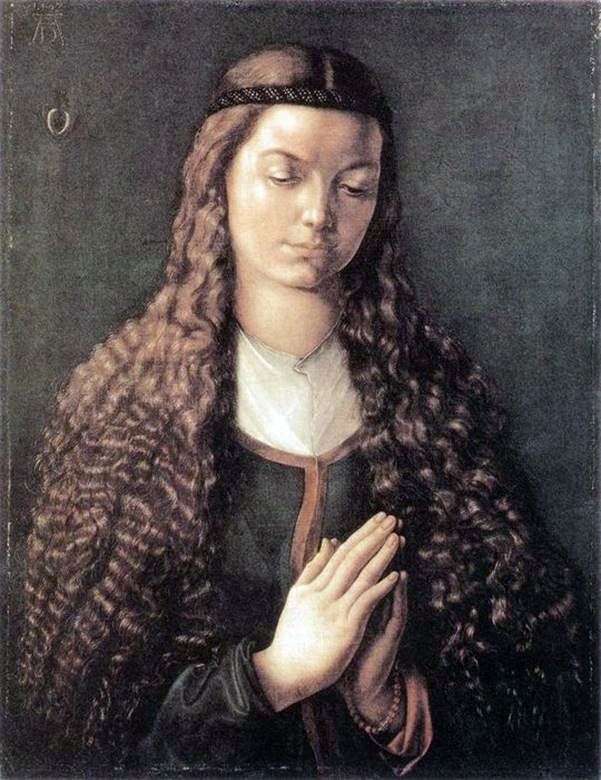
In November 1885, Van Gogh moved to Antwerp. Soon he decides to pursue his professional education and enters the Academy of Fine Arts. But aside from the lessons of drawing and painting, Van Gag also devotes considerable time to visiting museums. His attention is drawn to the work of the old masters, in particular the paintings of Peter Paul Rubens.
In the work of this great artist of the XVII century, Van Gogh attracted easy easy technique. He wrote to his brother that this lightness actually only seems so, for with the help of quick, daring strokes, Rubens paints so masterfully easily. His portraits and figures evoke infinite admiration for Van Gogh.
Inspired by the works of Rubens, Van Gogh writes a portrait of a woman, trying to perform it in the same light and rapid manner. He depicts a woman with dark, flowing hair. With a quick pasty brush strokes of green-ocher and dark-blue flowers, he writes a background on which dark, curly hair is silhouetted. The face is written in large, wide planes. The artist forms volumes with the help of deep shadows and solid light areas.
With the help of a bold manner of writing, the artist emphasized the nature of the woman. At the same time, he focused on the features of her face. Van Gogh masterfully conveyed the expressive look portrayed, directed to the side. In combination with the lowered corners of the mouth, the eyes convey the inconsistency and complexity of her feelings.
 Portrait of a peasant woman in a green shawl by Vincent Van Gogh
Portrait of a peasant woman in a green shawl by Vincent Van Gogh Portrait of a Woman by Vincent Van Gogh
Portrait of a Woman by Vincent Van Gogh Self-portrait in a straw hat with a pipe by Vincent Van Gogh
Self-portrait in a straw hat with a pipe by Vincent Van Gogh Woman sitting in the grass by Vincent Van Gogh
Woman sitting in the grass by Vincent Van Gogh Self-portrait with a pipe by Vincent Van Gogh
Self-portrait with a pipe by Vincent Van Gogh Portrait of a young girl with flowing hair by Albrecht Durer
Portrait of a young girl with flowing hair by Albrecht Durer Self-portrait in a gray felt hat III by Vincent Van Gogh
Self-portrait in a gray felt hat III by Vincent Van Gogh Portrait of Pope Tangi II by Vincent Van Gogh
Portrait of Pope Tangi II by Vincent Van Gogh